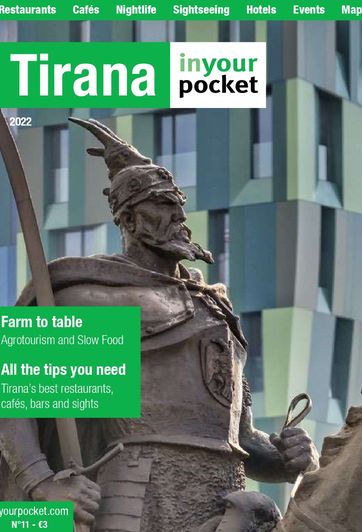The rise and fall of King Zog: Albania’s royal echoes
13 Nov 2025When Albania transitioned into a democracy after 1990, the king’s son, Prince Leka, came to Tirana to advocate for the return to a monarchy, however only 33% of voters supported that idea in a 1997 referendum. King Zog’s grandson, also called Leka, is currently the head of the royal house, and he’s an active figure in Albanian high society, politics, charity and diplomacy.
Visitors looking for traces of Albania’s royal past should start at the statue of Mbreti Zog, King Zog, at the northern end of Zog I Boulevard near the crossing with Rruga Petrela. This boulevard, together with many other infrastructural projects, was built during the reign of the king as part of his attempts to change Tirana from a small and remote city, rather randomly chosen as capital, to a more fitting centre of government. The statue depicts the king in his military attire, as a fitting ode to the country’s only monarch. Just down the road, on the corner of Rruga Fortuzi, stands the elegant statue of Geraldine Apponyi, Zog’s wife, who was Mbretëresha e Shqiptarëve or “Queen of the Albanians” for the last year of Zog’s rule, and nicknamed the white rose. Born in Budapest, her statue was donated in 2022 by the Hungarian embassy.
Another site of interest is the former Royal Palace at the eastern edge of the Grand Park, now used as Albania’s Presidential Palace and unfortunately closed to the public, although the gardens can be visited (Sat & Sun 09:00-20:00, winter 09:00-16:00; free). The idea of a grand royal residence was brought up by Zog in the early 1930s, and construction started shortly after. However, Albania’s invasion by Italy delayed completion until 1941, and Zog never got to reside there. The palace was used only once for its intended purpose, by Italian King Victor Emmanuel III, who slept there during his only tour of Albania. The building was used by the Italian viceroys until Albania’s liberation in 1944, when it was stormed and ransacked by Communist brigades. After WWII, the palace was used for government receptions, with all paintings, engravings or furniture from the monarchy removed. It remains a venue for high-profile government events, acting as a testament of Albania’s rich history.
Near the palace, the monumental Royal Mausoleum is a quiet, reflective site dedicated to the memory of many members of the Zog family. It was built in 1935 for the burial of Zog’s mother, Queen Sadije. After the communists took Tirana from the Nazis in 1944, the mausoleum was demolished, then seen as an unwanted symbol of a bygone era. In 2012, an exact replica was rebuilt by the Albanian government in order to reconnect with the forgotten past. The graves of King Zog, the Queen Mother, Zog’s Austro-Hungarian wife Queen Geraldine, his son Prince Leka and his Australian wife Princess Susan are all located here. Find it beside the Sofra e Ariut restaurant.
Though King Zog’s legacy is both celebrated and controversial, his royal landmarks provide travellers with an intriguing glimpse into Albania’s royal past. It’s a journey through time, offering insights into a period of Albania’s history that, while short, shaped the nation in ways that still echo today.
Text by Erik Haxhia



Comments